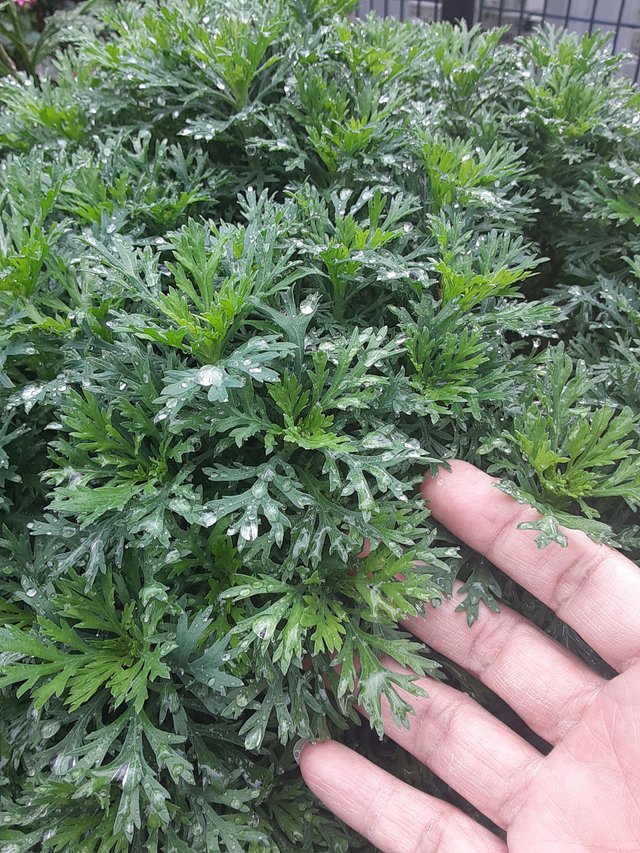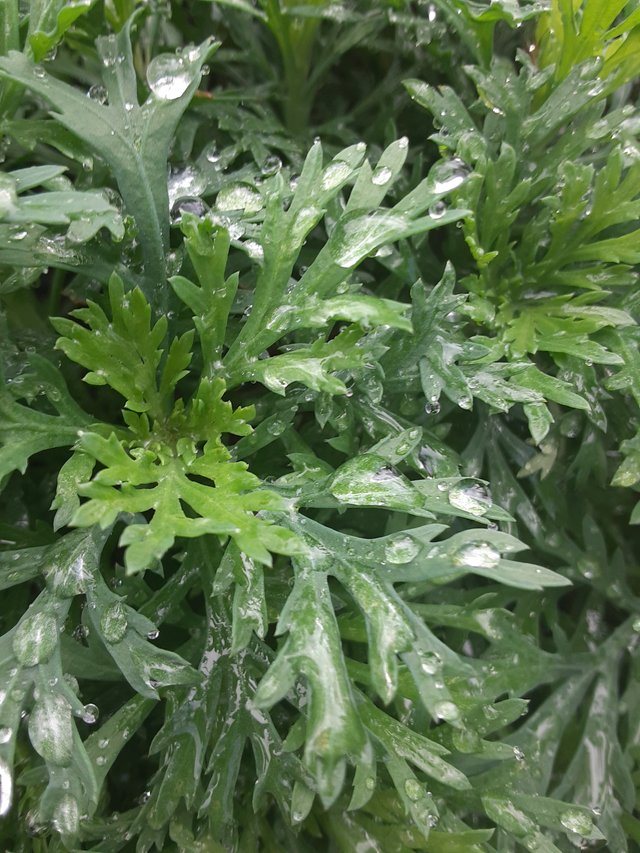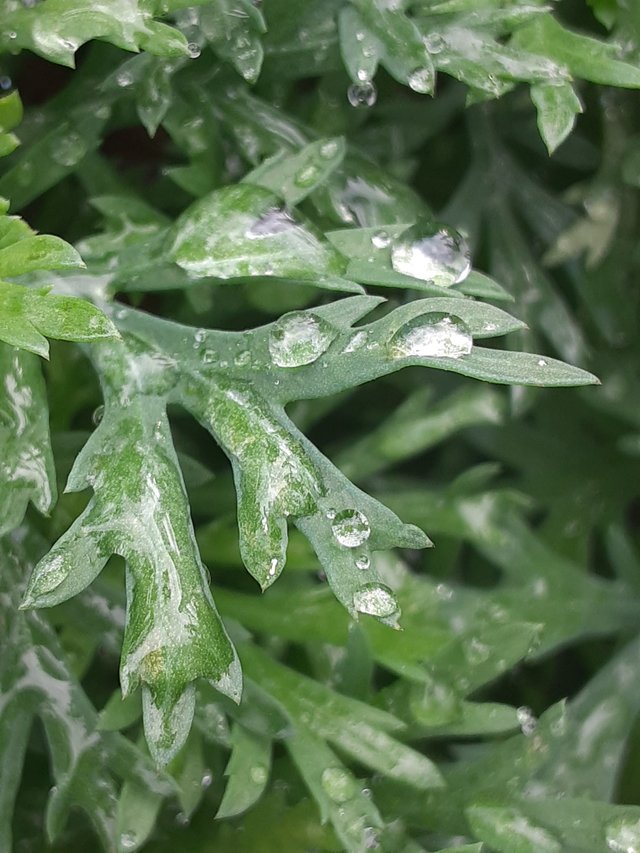
Artemisia absinthium, commonly known as absinthe wormwood or grand wormwood, is a perennial herb native to Eurasia. It's a member of the daisy family (Asteraceae) and is renowned for its distinctive silvery-green foliage and its strong, aromatic scent.
The plant grows up to 1.2 meters tall, with erect, branched stems. Its leaves are alternate, deeply dissected, and covered with fine, silvery-white hairs. This hairy covering gives the leaves a velvety texture and contributes to the plant's silvery-green appearance. The leaves are strongly aromatic, with a scent reminiscent of sage or camphor.

Artemisia absinthium has a long history of use in traditional medicine and as a flavoring agent. The leaves contain a variety of compounds, including thujone, which is responsible for the plant's distinctive bitter taste and psychoactive effects.
In the past, the leaves were used to make absinthe, a highly potent alcoholic beverage that was popular in the late 19th and early 20th centuries. However, due to concerns about thujone toxicity, absinthe was banned in many countries.

Today, Artemisia absinthium is still used in herbal medicine for various purposes, including as a digestive aid, a stimulant, and a vermifuge. It is also used as a flavoring agent in liqueurs and other alcoholic beverages. However, it is important to use the plant with caution, as excessive consumption can lead to serious health problems.
Ref.:
 |  |
Upvoted! Thank you for supporting witness @jswit.
Downvoting a post can decrease pending rewards and make it less visible. Common reasons:
Submit